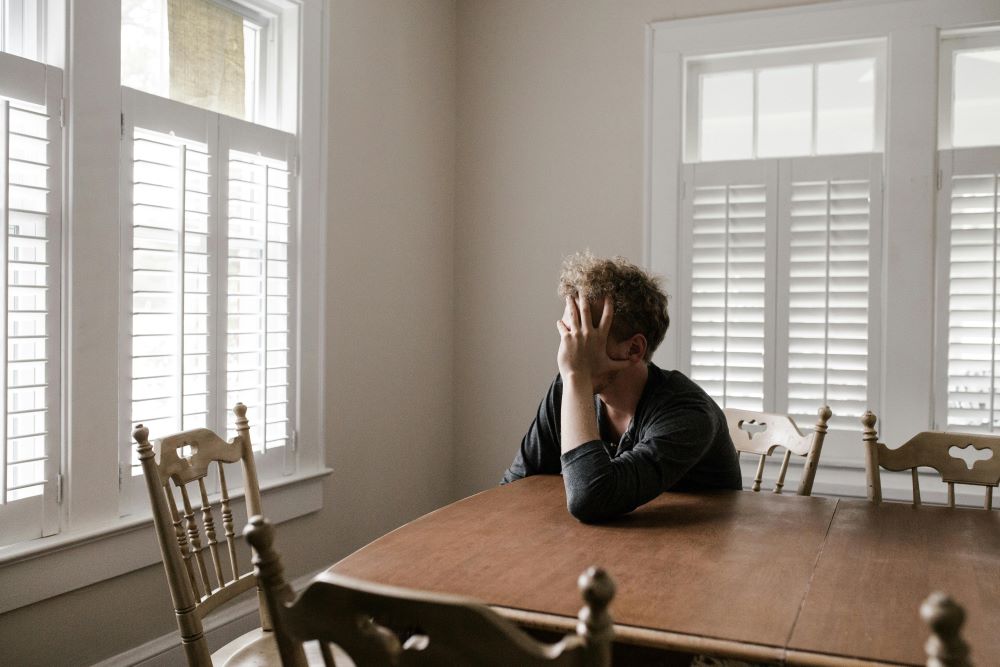
29 Jul PTSD vs. General Anxiety: What’s the Difference?
Most of the time, it can be difficult to make sense of what you’re feeling. You might notice changes in your mood, your sleep, or how you respond to everyday situations, but finding out why you feel the way you do isn’t always straight forward. If you’re feeling anxious, overwhelmed or constantly on edge, you may find yourself wondering whether it’s general anxiety – or something deeper, like PTSD. Understanding the difference can be the first step toward getting the right kind of support.
While there’s some overlap between post-traumatic stress disorder (PTSD) and generalised anxiety, the causes and patterns behind each are quite different. Below, we take a look at some of the differences.
What Is Generalised Anxiety?
Generalised Anxiety Disorder (GAD) is characterised by persistent, excessive worry that isn’t necessarily tied to one specific event. People with anxiety often feel a sense of dread or fear around everyday concerns – health, work, relationships, finances – even when there’s no obvious trigger.
Common signs of anxiety may include:
- Restlessness or feeling “on edge”
- Difficulty concentrating
- Muscle tension or physical discomfort
- Sleep problems
- Irritability
- Racing thoughts or “what if” thinking
Anxiety can feel like your mind is constantly scanning for threats, even when life appears relatively calm on the surface. The focus is often forward-looking: fear of something bad happening.
What Is PTSD?
PTSD develops after a traumatic event – something deeply distressing or disturbing, such as abuse, assault, an accident, witnessing violence, or the loss of a loved one. While it’s normal to feel shaken after trauma, PTSD involves symptoms that persist long after the event has passed.
Unlike general anxiety, PTSD often centres on the past. The trauma may feel as though it’s still happening, even years later.
Common symptoms of PTSD include:
- Flashbacks or intrusive memories
- Nightmares or disturbed sleep
- Avoidance of places, people, or conversations linked to the trauma
- Feeling emotionally numb or disconnected
- Intense physical or emotional reactions to reminders of the trauma (known as triggers)
- Hypervigilance – feeling constantly alert or unsafe
PTSD isn’t limited to one type of person or trauma, it can affect anyone, at any time. Some people experience delayed symptoms that emerge weeks, months, or even years after the original event.
How to Tell the Difference
Here are a few key distinctions that may help:
| PTSD | General Anxiety |
| Linked to a specific trauma or series of events | Not tied to a specific trauma |
| Involves flashbacks, nightmares, and re-living past events | Often involves future-oriented worry |
| Avoidance of trauma-related triggers | Avoidance of stress or discomfort generally |
| Intense reactions to specific reminders | Ongoing low-level worry or tension |
| May include dissociation (feeling detached from reality or self) | Rare in general anxiety |
That said, it’s very possible to experience both conditions at the same time. Some people with PTSD also develop generalised anxiety, or vice versa. Everyone’s experience is different, and labels are only helpful if they support healing, not limit it.
When to Seek Support
Here at Future Edge Therapy in Northampton, we’ve supported many clients living with PTSD, anxiety, or a mix of both. Our approach is warm, compassionate and tailored to your unique story. Whether you’ve been carrying your experiences for years or you’re just beginning to unpack them, there is support available.
We offer a FREE 20-minute discovery call to help you explore your options and decide whether trauma therapy or PTSD counselling might be the right step for you. There’s no pressure – just a chance to talk things through with a qualified professional who truly listens.
 7 ways to combat anxiety - Free ebook
7 ways to combat anxiety - Free ebook

